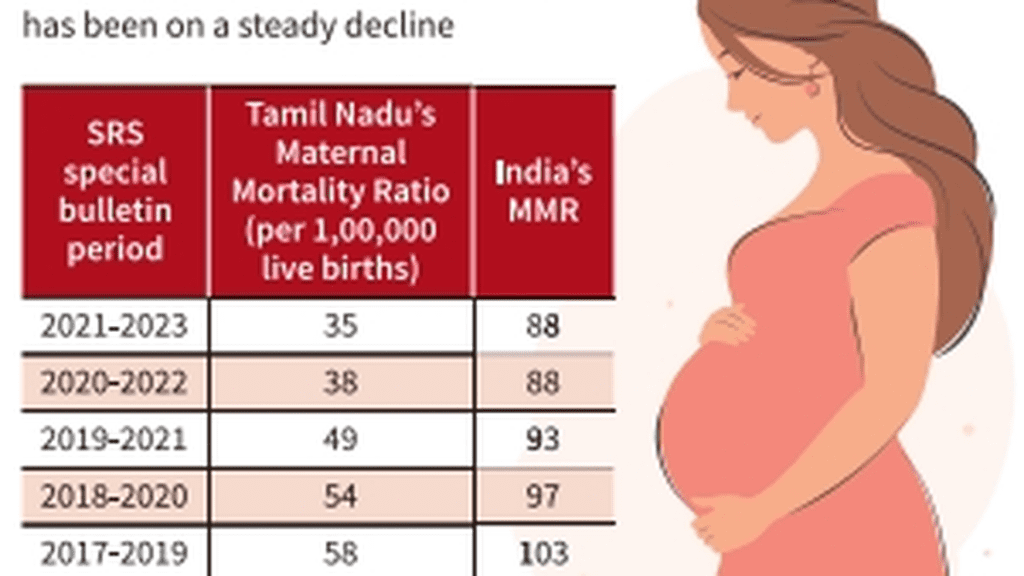Economic burden of rising breast cancer cases in India will be $19.55 billion per year by 2030: study Premium

Economic burden of rising breast cancer cases in India will be $19.55 billion per year by 2030: study Premium
The number of breast cancer cases in India is projected to rise by 50,000 annually this decade, with the economic burden estimated to an average $19.55 billion per year, according to a recent study published in Nature.
Pegging the annual increase of cases at a rate of 5.6%, the study titled ‘Economic Burden of Breast Cancer in India, 2000–2021 and Forecast to 2030’, has estimated the associated economic impact in India using the autoregressive integrated moving average (ARIMA) model.
Cancer is now reported as the fifth-leading cause of death in India (5.7% of all deaths), as per the Medical Certification of Cause of Death (2018). Every year, a rise of around 11.5% in cancer incidence is recorded in India, along with a 13.8% increase in cancer-related deaths.
Leveraging data from the Global Burden of Disease (GBD) database, researchers from Kerala, Tamil Nadu, Assam and Karnataka adopted a bottom-up approach to estimate direct costs, including hospital visits, treatment, and follow-up care. The longitudinal survey followed 500 breast cancer patients treated at Tata Memorial Centre (TMC) in Mumbai from June 2019 to March 2022. The findings highlighted the severe financial strain faced by most breast cancer patients, with rural and economically disadvantaged households being disproportionately affected.
Denny John, Professor of Public Health at M. S. Ramaiah University of Applied Sciences in Bengaluru, who developed the methodology and supervised the study, said the depreciating currency value and the costs at private healthcare facilities have not been taken into consideration. “We only looked at treatment costs till 2021 due to limited data. So, the economic burden we are estimating is actually an underestimation,” he told The Hindu.
“The ARIMA model predicts that the number of patients with breast cancer in India will continue to increase in the future. There are various possible reasons for this rise. Genetic factors and family history of breast cancer (inheritance of BRCA1 and BRCA2 genes), obesity, poor lifestyle, ultra-processed food consumption, smoking, and drinking alcohol can increase the risk significantly,” Dr. John, who is also the corresponding author of the study, said.
Over the past 26 years, the age-standardised incidence rate of breast cancer in females increased by 39.1% from 1990 to 2016, with the increase observed in every State. “Current trends point out that a higher proportion of the disease is occurring at a younger age in Indian women, as compared to the West. The survival rate of patients with breast cancer is poor in India as compared to Western countries due to earlier age at onset, late stage of disease at presentation, delayed initiation of definitive management and inadequate/fragmented treatment.
“In this study, the economic burden of breast cancer also showed an upward trend from 2021 to 2030. The total economic burden of breast cancer in India was estimated at $8 billion in 2021, and according to our prediction, it will increase to $19.55 billion per year by 2030,” the doctor said.
Listing possible reasons, Dr. John said, “Firstly, breast cancer is associated with lower levels of physical activity, socioeconomic status, utilisation of health facilities and health insurance. The longitudinal survey at TMC showed that 14.2% of patients discontinued treatment, and only 9% of the patients were covered by any health insurance scheme.”
Breast cancer is also associated with high co-morbidity, with hypertension and diabetes being the most common co-morbidities, adding to additional costs for the management of these diseases, and thus contributing to a high economic burden. Breast cancer in India primarily affects women in the prime working and reproductive age group thus contributing to high productivity loss, with the relative share of food, utility and other expenditure related to household consumption declining during cancer treatment, he explained.
Asserting the need for policy interventions to address the growing economic burden, Dr. John said: “Breast cancer’s economic impact on GDP is significant. Women form a crucial part of the workforce, and this is a wake-up call for Indian corporate companies to adopt supportive policies for their employees.”
To achieve early detection, early diagnosis, and early treatment, as well as to minimise the progression to severe or major consequences, the study recommended routine breast cancer screening for high-risk populations. These include those with type 2 diabetes and obesity.
“While more people should have access to health insurance to pay for breast cancer screenings, interventions to encourage people to lead healthy lifestyles – such as sensible eating and moderate exercise – should be taken up to lower the incidence of breast cancer,” Dr. John said.
The ARIMA model attempts to guide policymakers to formulate healthcare budgets, ensuring adequate funds are allocated to manage the increasing burden of breast cancer. Introducing and promoting early detection techniques, such as AI/ML based cancer detection methods, can lead to early diagnosis, thereby reducing the treatment costs and improving survival rates.
Providing advanced treatment options to all segments of the population especially the rural areas can help to reduce the impact of cancer. The direct and indirect cost provides an insight of the huge treatment cost of cancer that can cause financial distress in families, so decision makers can use this to frame an efficient financial support system, also developing insurance schemes that cover a major portion of the treatment costs, Dr. John added.










